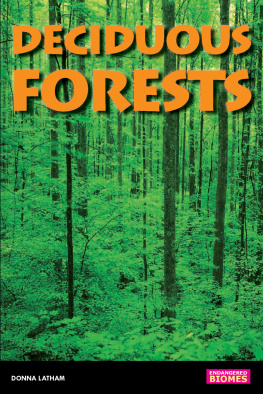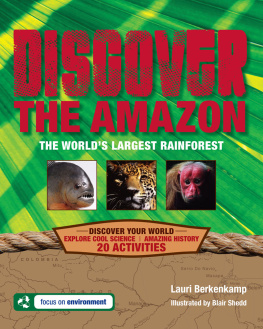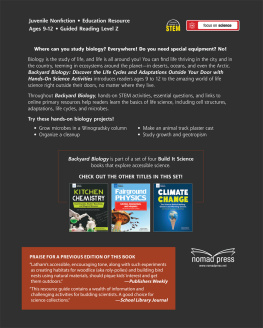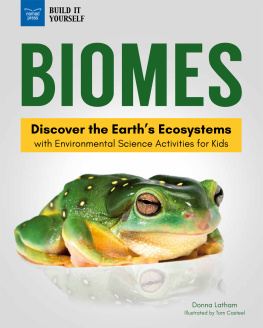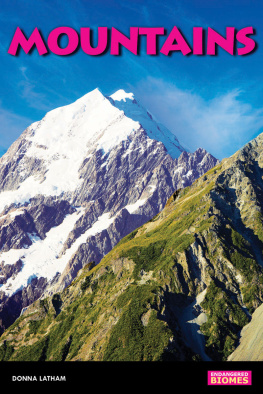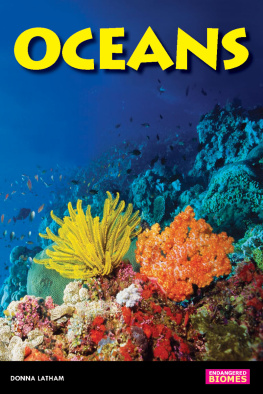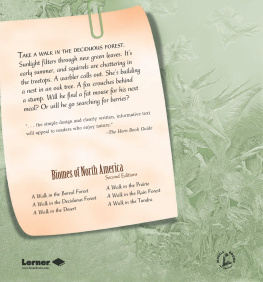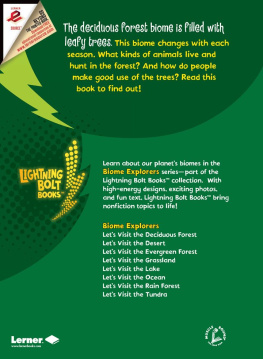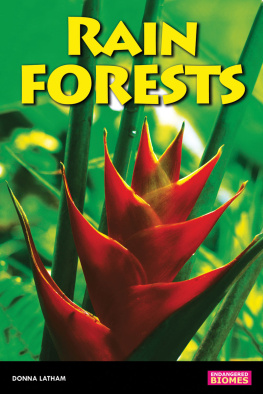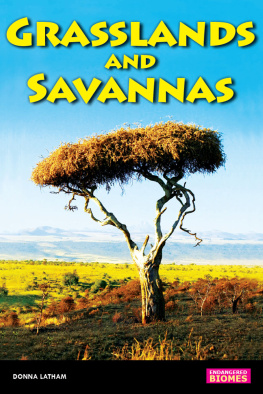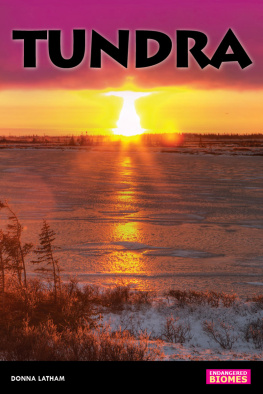
Nomad Press
A division of Nomad Communications
10 9 8 7 6 5 4 3 2 1
Copyright 2010 by Nomad Press
All rights reserved.
No part of this book may be reproduced in any form without permission in writing from the publisher, except by a reviewer who may quote brief passages in a review. The trademark Nomad Press and the Nomad Press logo are trademarks of Nomad Communications, Inc.
Printed by Regal Printing Limited in China,
June 2010, Job Number 1005019
ISBN: 978-1-934670-54-5
Questions regarding the ordering of this book should be addressed to
Independent Publishers Group
814 N. Franklin St.
Chicago, IL 60610
www.ipgbook.com
Nomad Press
2456 Christian St.
White River Junction, VT 05001
www.nomadpress.net
Image Credits
corbisimages.com/ W. Cody, cover; Michael T. Sedam, .
iStockphoto.com/ Jn Rysavy, .
What Is a Biome?
Grab your backpack! Youre about to embark on an exciting expedition to explore one of Earths major biomes: the deciduous forest!
A biome is a large natural area with a distinctive climate and geology. The desert is a biome. The rainforest, ocean, and tundra are biomes. So is the deciduous forest. Biomes are the

Did You Know?
Scientists dont agree on how many biomes there are. Some divide the earth into five biomes. Others argue for 12.
Words to Know
biome: a large natural area with a distinctive climate, geology, and set of water resources. A biomes plants and animals are adapted for life there.
deciduous: describes trees and bushes that shed their leaves each year.
climate: average weather patterns in an area over a period of many years.
geology: the rocks, minerals, and physical structure of an area.
adapt: changes a plant or animal makes to survive in new or different conditions.
ecosystem: a community of living and nonliving things and their environment. Living things are plants, animals, and insects. Nonliving things are soil, rocks, and water.
environment: everything in nature, living and nonliving.
Each biome has its own biodiversity, which is the range of living things adapted for life there. It also contains many ecosystems. In an ecosystem, living and nonliving things interact with their environment.
Teamwork keeps the system balanced and working. Earths biomes are connected together, creating a vast web of life.
Landscape and Climate of the Deciduous Forest
Trees, trees, and more trees define the temperate deciduous forest. Deciduous forests are one of the earths most pleasant places, where humans have thrived for thousands of years.

A temperate climate experiences a wide range of temperatures. They may dip to -20 degrees Fahrenheit (-29 degrees Celsius) in the winter and peak at close to 100 degrees Fahrenheit (38 degrees Celsius) in the summer. But the average is 50 degrees Fahrenheit (10 degrees Celsius). Yearly rainfall ranges from 29 to 59 inches (74 to 150 centimeters).
Youll find temperate deciduous forests in the eastern United States, Canada, China, Japan, Russia, and central and eastern Europe. These areas are all in the Northern Hemisphere. There are a few, much smaller areas of deciduous forest in the Southern Hemisphere.

Words to Know
temperate: climate or weather that is not extreme.
Northern Hemisphere: the half of the planet north of the equator.
Southern Hemisphere: the half of the planet south of the equator.

Seasons characterize this biome. A cold winter follows a long, warm growing season of around six months. Temperate deciduous forests enjoy four seasons, each with its own weather. Snowy winters and hot summers are about the same length. Even with this dependable pattern, the length of each season can vary from year to year or from location to location.



Words to Know
fertile: good for growing 1 plants. 1
nutrients: substances I that organisms need to live and grow.
topsoil: top layer of soil.
organic matter: decaying plants and animals.

The soil in the deciduous forest biome is dark brown, fertile, and rich in nutrients. Plants and animals inhabit the ground level, or topsoil. Seeds sprout and plants take root in the blend of silt, sand, clay, and organic matter.
Did You Know?
Deciduous comes from the Latin word decidere, which means to fall off. No wonder autumn is also called FALL.

Leaf litter, grasses, and other plants protect topsoil from getting too dry. When plants die, insects such as ants, spiders, centipedes, and termites chomp them up into teeny bits.


Decomposers also break down wastes and dead plants and animals, and recycle them into humus. Rich in nutrients, humus allows new plants to grow.
Below the topsoil is a layer called subsoil. Minerals and humus mingle together here. Thirsty roots push through sticky clay and weathered rocks searching for water sources.
Below the subsoil are layers of bedrock. Plant roots cant break through these deep layers of solid rock.
Words to Know
decomposers: bacteria, fungi, and worms that break down wastes and dead plants and animals.

